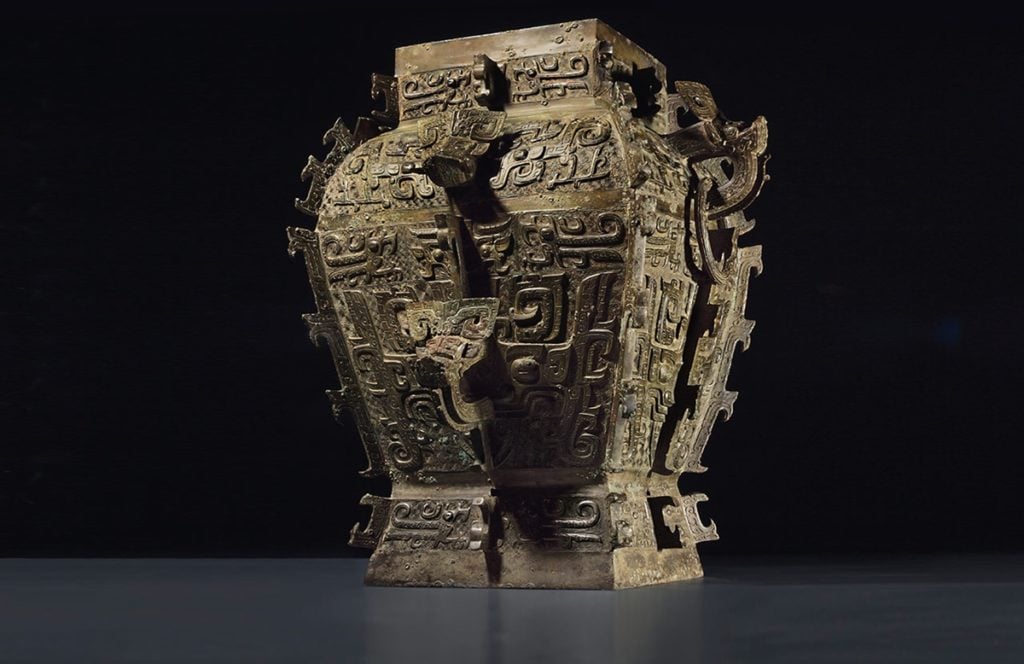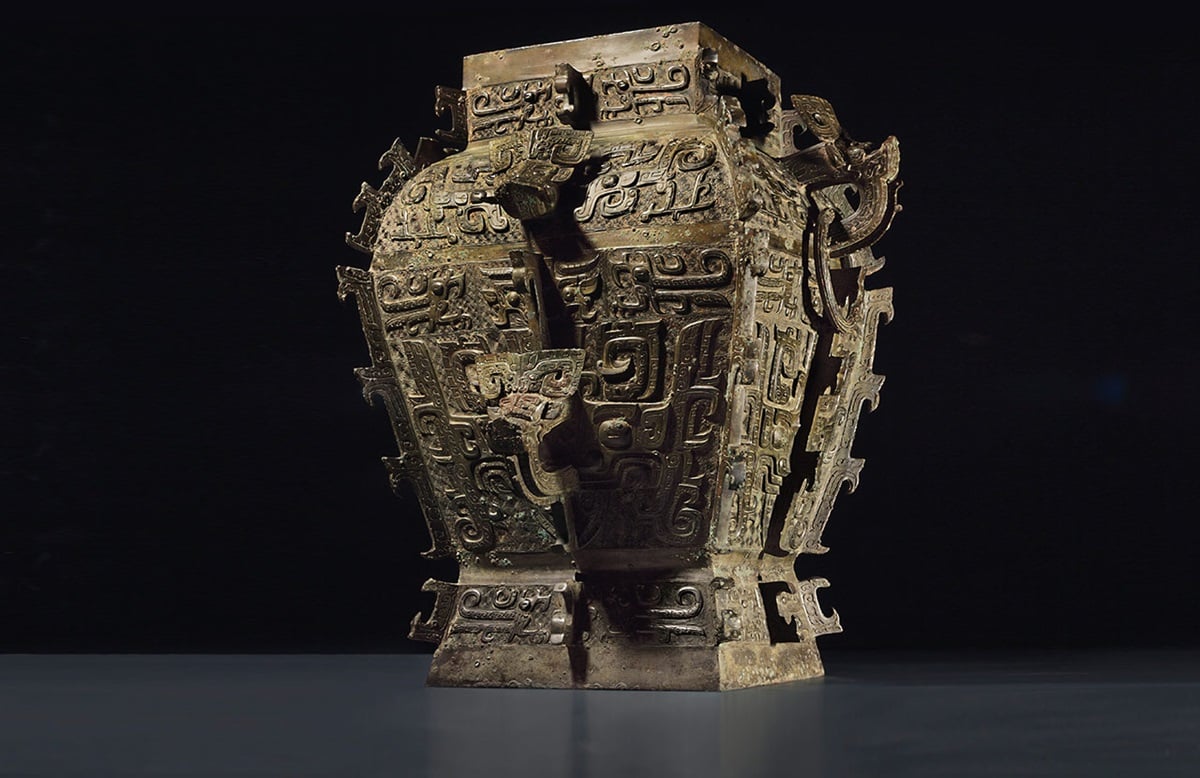Analysis
Six Reasons Why This Chinese Bronze Vessel Will Shatter Asian Art Auction Records
Christie's will set a record for an archaic Chinese bronze when the ‘Min’ Fanglei comes up for sale in New York.

Christie's will set a record for an archaic Chinese bronze when the ‘Min’ Fanglei comes up for sale in New York.

Benjamin Genocchio


The “Min” Fanglei, a massive bronze ritual vessel from the Late Shang/Early Western Zhou dynasty (12th–11th century BC). Christie’s says it ranks among the most important Chinese archaic bronzes to ever appear at auction and will hold a single-lot sale for it on March 20th.
You haven’t heard of it? Missed the full-page advertisement in this past Friday’s New York Times? Don’t worry, here’s an art world insider’s tip: Christies will set an auction record for an archaic Chinese bronze on Thursday, March 20th, at 11 a.m., when the ‘Min’ Fanglei comes up for sale in New York.
What will it sell for? Privately, Asian art experts speculate that it could go for as much as US$40 million. Here are six reasons why this ritual vessel (which carries an unpublished estimate of around US$15 million) is likely to shatter all records:
1. This is a Very Special and Incredibly Rare Object (Fact)
Wine containers (lei) were made during a brief period during the Late Shang and the Early Western Zhou periods (12th–11th century BC) with square-shaped ones (fang lei) being the rarest and most prized. This one is among the largest ever found and also among the most beautiful: notice the intricacy of the casting, so clean and precise, showing mysterious, stylized creatures.
2. It has Impeccable Provenance (Fact)
As the Christie’s auction catalogue points out, this object has been owned and handled by many important early 20th century Asian art dealers and collectors, including A.W. Bahr, C.F. Yau, and C.T. Loo. Published records on the piece go back to 1928, attesting to its distinguished status.
3. Record-Setting Sale History (Fact)
Christie’s New York offered the work in March 2001, when it sold for US$9 million and set a then–world record for an Asian artwork. This remains a world auction record for any archaic Chinese bronze sold at auction. Who won it? Christie’s is not saying, but a New York Asian art dealer told me privately it was an Italian man, who just died, and his wife has put it back up for sale.
4. The Chinese Want This Cultural Relic Back (Rumor)
I can’t confirm these details, but this work was the talk of many Asia Week dinners and receptions over the weekend. I was told the vessel is well known in China and that several prominent Chinese museums want it back. Shanghai Museum has sent a delegation to attend the auction and presumably bid on items.
5. Matching Cover to the Vessel is in a Chinese Museum (Rumor)
The vessel is missing its lid, or cover, which may be in the Hunan Provincial Museum, Changsha, in China. I have been in touch with the museum to verify, but have not received confirmation. The Christie’s sale catalog mentions this possibility as well. If this is indeed true, then it is a fair bet that the Hunan Museum will be bidding on it.
6. The Chinese Have the Will and Money to Buy It (Fact)
Chinese investment in art is increasingly global, as documented in a new art market report released at TEFAF this month. The presence and participation of Chinese buyers at New York, London, and Hong Kong auctions confirms this. One recent high-profile acquisition was Chinese billionaire Wang Jianlin’s purchase of a Picasso work for US$28.2 million at Christie’s New York in November of last year.